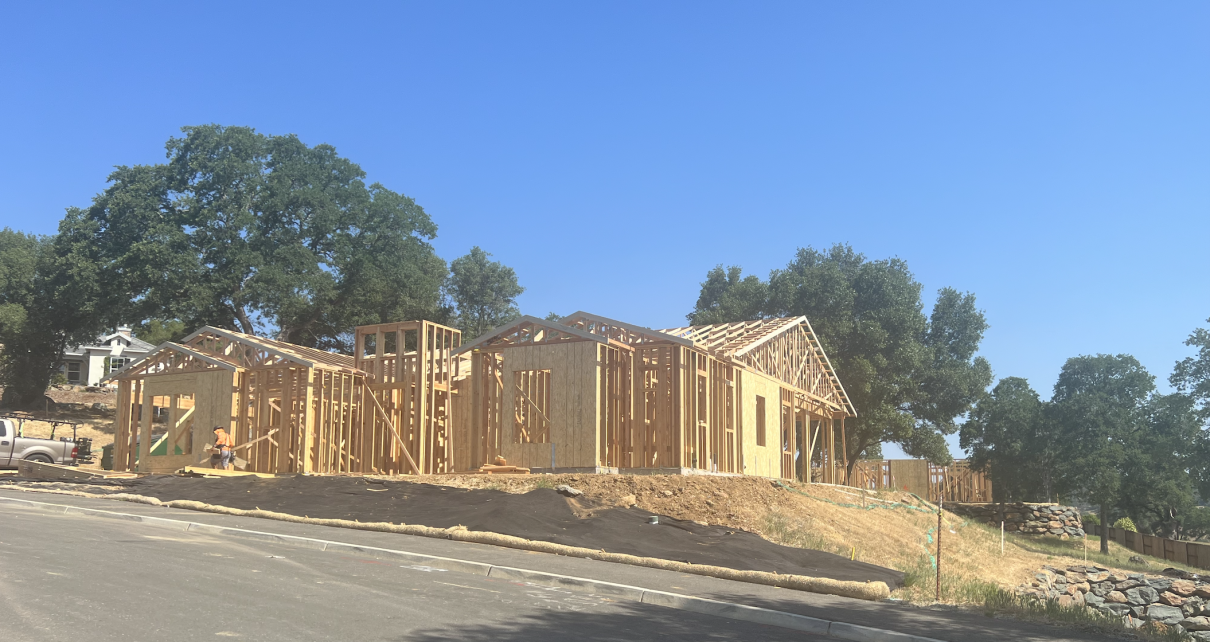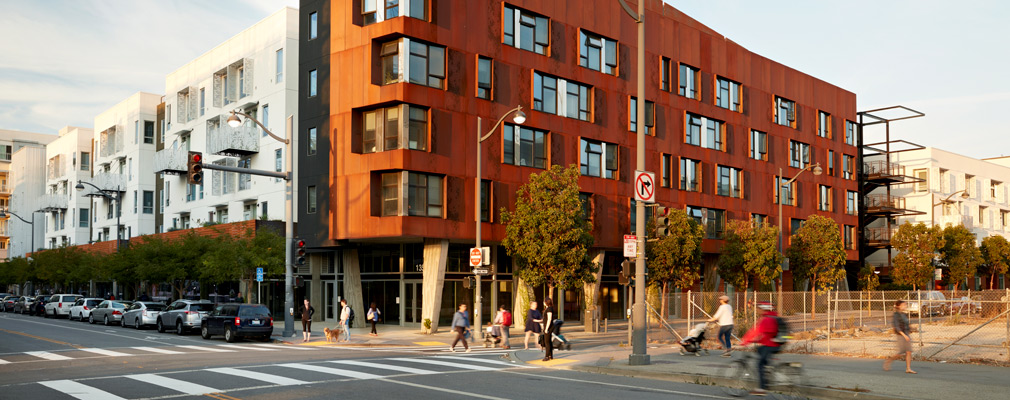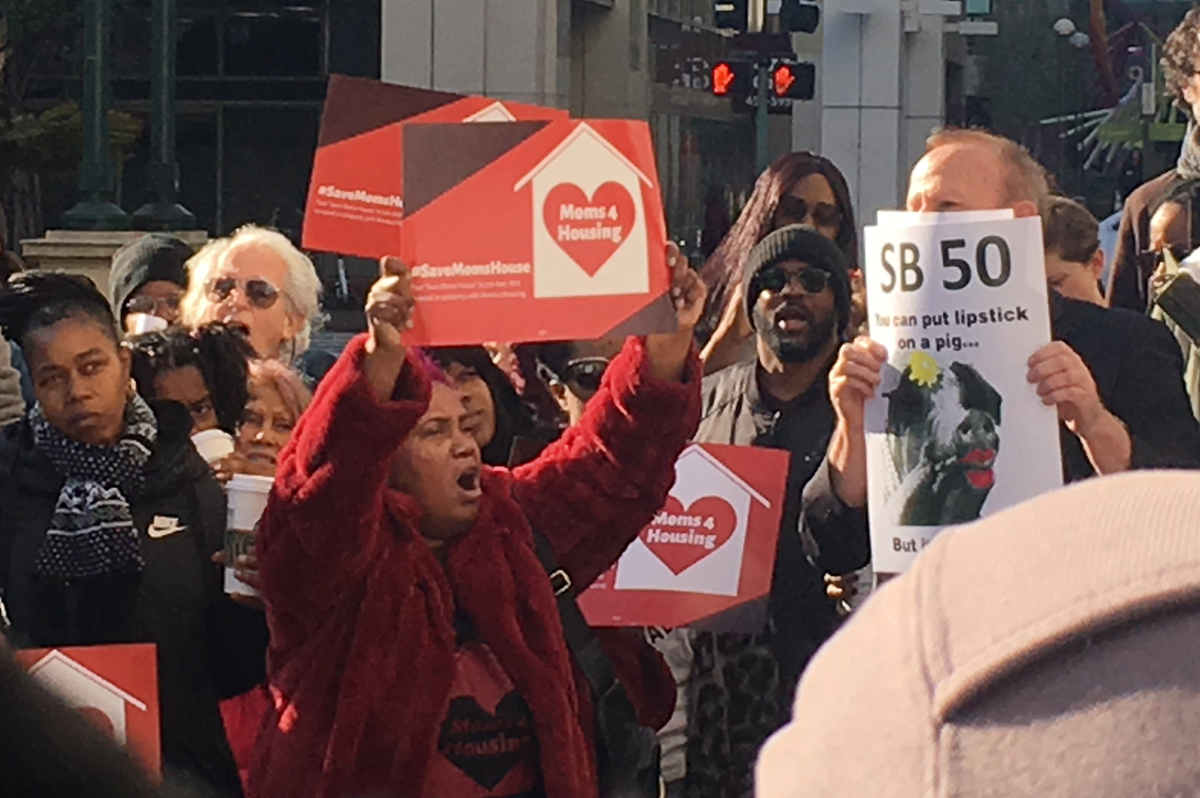
California new home development. (Photo: Katy Grimes for California Globe)
Inclusionary Zoning Would Undermine Sacramento’s Recent Housing Reforms
The best way to promote affordable housing is to liberalize zoning and permitting requirements without affordability mandates
By Christopher Calton, January 24, 2024 2:45 am
Sacramento recently took a major step toward fixing its housing crisis by adopting the “Missing Middle Housing Plan,” which will allow apartments to be built in single-family neighborhoods. In urban-planning lingo, this is “upzoning,” which raises the density limits in designated areas. Low density limits are among the largest contributors to housing shortages nationwide, so Sacramento’s reform is sure to encourage construction.
In the wake of the plan’s adoption, however, many people are calling for an “inclusionary zoning” mandate. Inclusionary zoning requires builders to set aside some of the new units for “affordable”—which is to say, below-market-rate—housing. This is to ensure that developers do not neglect the lower class in favor of buyers of more-profitable luxury dwellings.
The city council is split on the idea. “Just because something sounds good, doesn’t mean it is good,” Councilwoman Lisa Kaplan demurred. “Are we creating unintended consequences?” The answer to Kaplan’s question, according to a wealth of research, is a resounding yes.
Inclusionary zoning was invented in Fairfax, Virginia, in 1971, but it quickly gained popularity in California. By 1981, 22 localities in the state, as well as the California Coastal Commission, had implemented some form of the policy.
At the time, Professor Robert Ellickson of Stanford University cautioned that inclusionary zoning was “likely to aggravate the housing crisis it has ostensibly been designed to help solve.” Because the policy requires a number of units to be offered at less-profitable below-market prices, Ellickson argued, it would constrain supply. Affordability mandates were essentially a tax that discouraged construction, raising the price of housing overall.
In the four decades since Ellickson’s prescient warning, California’s housing crisis has deepened dramatically. One might think that policymakers would have learned their lesson, but the new trend is to pair inclusionary zoning with liberal reforms that raise density caps, as Sacramento is now considering.
The question, then, is whether the benefits of upzoning outweigh the negative consequences of affordability mandates.
A recent study from New York University’s Furman Center examined Seattle’s inclusionary-zoning reform, implemented in 2020. The study found that areas of the city that were not rezoned had more housing built than did the inclusionary zones with higher density caps. In other words, inclusionary zoning deterred more construction than upzoning encouraged.
Their findings should have been unsurprising. Economists Benjamin Powell and Edward Stringham found similar results in Watsonville, California, which saw housing construction come to a standstill in the decade after adopting inclusionary zoning. The city eventually lowered its affordability requirements and saw a 12 percent jump in housing units in only three years.
Economists have found similar results in New York and Virginia, among other places. The findings consistently point to the same problem: mandates for below-market units increase the price of housing on the whole.
So does this mean developers should be free to build whatever they deem most profitable? Absolutely. UCLA’s Lewis Center recently surveyed several studies on market-price development and found that rents had declined across the board.
When left unconstrained, developers build housing for all income levels. California’s recent audit of San Francisco’s housing policies confirms this. It found that streamlined permitting under SB 35 combined with the State Density Bonus Law incentivized builders to construct more 100-percent affordable developments, far exceeding what had been built under San Francisco’s inclusionary-zoning policy.
The best way to promote affordable housing is to liberalize zoning and permitting requirements without imposing affordability mandates. Even if builders exclusively constructed luxury units, this would create vacancies elsewhere, allowing everybody to move up a rung on the housing ladder. Rising tides lift all boats.
- To Fight Corruption, San Francisco Must Decriminalize Construction - February 28, 2024
- More Affordable-Housing Bonds? - February 8, 2024
- Inclusionary Zoning Would Undermine Sacramento’s Recent Housing Reforms - January 24, 2024





As we migrate looking for affordability, safety, and a good place to hang our hats, those who depend on us follow doing their thing: lawn care, cute shops, expensive coffee, housekeepers, landscapers, and of course, those we are running from.
It seems the city also wants to provide space for our thieves, drug suppliers, and homeless panhandlers so their herd doesn’t move out of reach. This really is what the “authorities” are trying to do: prevent us from running from the aftermath of a government who has given up on law enforcement because from where they sit , voters clearly do not want it.
With Sacramento’s leftist Democrat City Council members adopting the “Missing Middle Housing Plan,” which will allow apartments to be built in single-family neighborhoods, maybe low income apartments can be finally built in Democrat Mayor Steinberg’s upscale neighborhood and other ritzy neighborhoods favored by Democrat lawmakers and lobbyists?
Christopher Calton, a “research fellow” from Oakland, claims that low density limits are among the largest contributors to housing shortages nationwide?” What kind of lame brain thinking is this? There’s plenty of land to build housing outside of Democrat controlled crime infested hellhole cities such as Oakland?
Funny,….
It was not to long ago the left leaning politicians used, environmental, cultural, archaeological, and traffic impact studies to thwart construction. It was the Republicans that wanted these costly and never ending regulations to be eased and allow the market to solve the housing crises.
Well, what do u know,.. the lefties did a 180 and now calling it their own idea, riding to the rescue.
The State of California is over riding LOCAL zoning laws to impose affordable housing.
Think about it,… you live in a stable single family zoned neighborhood and there is a empty lot. Developer comes in splits the lot and builds 6 units, 2 primary residences with attached ADU’s, and then 2 detached ADU’s.
The likelihood of a owner occupied single family, with 2 in law families moving in is next to zero.
These are going to be separate rental units (apartments). The limited parking from stuffing 6 units on what was one lot, to the instability and transient nature of apartments, plus the likelihood of police calls for service in a neighborhood that has virtually no calls.
Call me a NIMBY, right you are. I chose a neighborhood because of it’s character. If I wanted to live next to multi family housing, or industrial area, I could have spent less money to buy a house.
We all lived in apartments when we first started out, with roommates. Earned enough money to get our own apartment, then rented a house and then finally bought our own home away from the 3 am screaming arguments next door.
Mr. Calton, You seem like a nice young man, and I think your heart is in the right place. But do not negate 40+ years of work to be able to live in a nice neighborhood, which is now under attack by these policies that you are advocating.